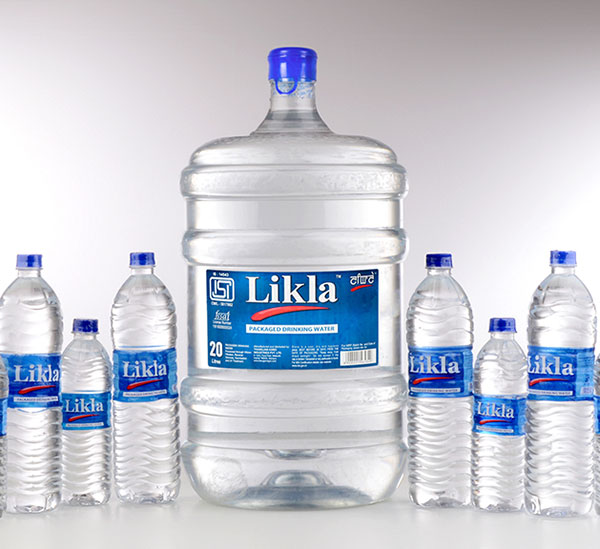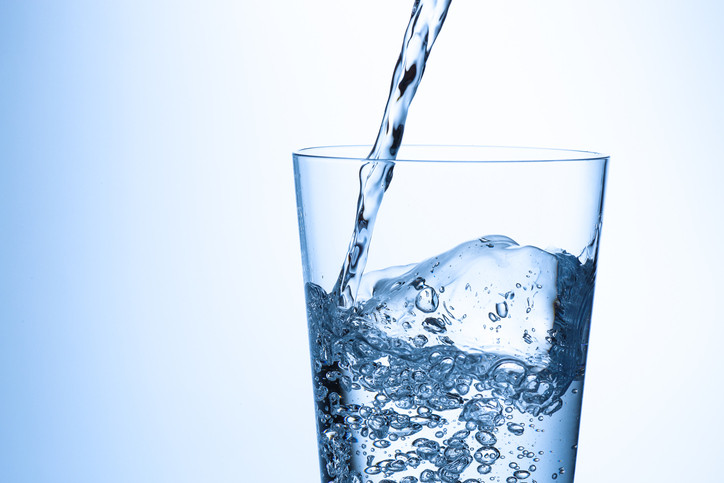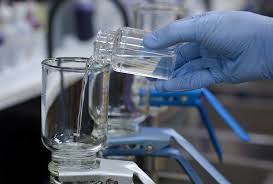WATER, DRINKING WATER - WASTE WATER AND EFFLUENTS:
 Accurate Water Analysis is a responsibility to the Country’s Infrastructure. According to estimates,
approximately 71% of the Earth’s surface is covered with water. The total amount of water on the
earth is about 1.36 billion cubic kilo metres (326 million cubic miles). However, only 2.5% of the
Earth’s water is fresh water, of this 98.8% is in the form of ice and ground water, leaving a very low
volume for the consumer. Thus, water is the most precious resource.
Accurate Water Analysis is a responsibility to the Country’s Infrastructure. According to estimates,
approximately 71% of the Earth’s surface is covered with water. The total amount of water on the
earth is about 1.36 billion cubic kilo metres (326 million cubic miles). However, only 2.5% of the
Earth’s water is fresh water, of this 98.8% is in the form of ice and ground water, leaving a very low
volume for the consumer. Thus, water is the most precious resource.
 Testing the suitability of water for the intended use requires adequate expertise and sophisticated
instrumentation. What to test for and how frequently is outlined in various documents.
Testing the suitability of water for the intended use requires adequate expertise and sophisticated
instrumentation. What to test for and how frequently is outlined in various documents.
 The essential routine parameters for basic potable water quality control are pH, TDS
(Total Dissolved Solids) Calcium and Magnesium Hardness (as CaCo3) Alkalinity, Fluoride, Chloride,
Sulphate, Nitrate, Arsenic, Dissolved Iron, Salinity, Total Coliforms and E.coli.
The essential routine parameters for basic potable water quality control are pH, TDS
(Total Dissolved Solids) Calcium and Magnesium Hardness (as CaCo3) Alkalinity, Fluoride, Chloride,
Sulphate, Nitrate, Arsenic, Dissolved Iron, Salinity, Total Coliforms and E.coli.
WATER:
- Packaged drinking water - IS : 14543 - 2004
- Natural mineral water - IS : 13428 - 2005
- Surface/ground water - IS : 10500 - 1991
- Feed water/boiler water - IS : 10496 - 1983
- Water for Food processing industry as per IS: 4251 - 1967
- Water for Storage batteries as per IS: 1069 - 1993
- Drinking water as per WHO/EPA/European community specification
- Purified water and water for injection (as per EP, BP & USP)
- Water for Irrigation purpose as per IS:11624-1986
- Water for swimming pools IS: 3328-1993
- Water for Paper & Pulp industries IS: 2724
EFFLUENT (WASTE) WATER :
 The two most common tests for waste water are BOD ( Biochemical Oxygen Demand) and COD
(Chemical Oxygen Demand) determinations. BOD is an expression for the quantity of oxygen
required for biological degradation of Organic matter in a wastewater sample. BOD measurement is
therefore used as a basis for the detection of biologically degradable organic matter in water.
The two most common tests for waste water are BOD ( Biochemical Oxygen Demand) and COD
(Chemical Oxygen Demand) determinations. BOD is an expression for the quantity of oxygen
required for biological degradation of Organic matter in a wastewater sample. BOD measurement is
therefore used as a basis for the detection of biologically degradable organic matter in water.
Analysis of waste water and Effluents:
- As Per MOEF guidelines
- AS per BIS specifications
- As per State Pollution Control Boards
- Heavy Metals and Pesticides Residues
- Poly-nuclear Aromatic Hydrocarbons (PAHs)
- Polychlorinated Biphenyls (PCBs)
- Volatile Organic Compounds (VOCs)
BIOLOGICAL TEST ON WATER:
 The following Biological test on water is conducted at our lab , like E. Coli, Coliforms ( Total and
faecal) Total Plate Count, Sulphite reducing anaerobes, Pseudomonas aeruginosa, Aerobic microbial
count, Faecal Streptococci and Staphylococcus aureus, Salmonella and Shigella, Vibrio cholera and
yeast and Moulds etc.,
The following Biological test on water is conducted at our lab , like E. Coli, Coliforms ( Total and
faecal) Total Plate Count, Sulphite reducing anaerobes, Pseudomonas aeruginosa, Aerobic microbial
count, Faecal Streptococci and Staphylococcus aureus, Salmonella and Shigella, Vibrio cholera and
yeast and Moulds etc.,
Accurate water analysis requires a combination of both proper sampling and testing methods. A general protocol for accurate water analysis includes the following steps:
- 1. Sample collection: Samples should be collected according to standard methods, such as those outlined by the American Public Health Association (APHA) or the United States Environmental Protection Agency (EPA). The type of sample container and preservatives used will depend on the specific analytes of interest.
- 2. Sample preservation and transport: Samples should be stored and transported at the appropriate temperature and in a manner that preserves the integrity of the sample. This may include refrigeration, freezing, or the addition of preservatives.
- 3. Sample preparation: Sample preparation methods may include filtration, centrifugation, or other techniques to remove any particles or organisms that may interfere with the analysis.
- 4. Analysis: The analysis should be performed according to established methods, such as those outlined by the APHA or the EPA. It is important to use calibrated equipment and to follow the manufacturer's instructions for the specific analytical method being used.
- 5. Quality control: Quality control measures, such as the use of blanks, standards, and duplicates, should be implemented to ensure the accuracy and precision of the results.
- 6. Data interpretation: The results should be interpreted in the context of the specific water source and use, taking into account any relevant regulations or guidelines.
It should be noted that this is a general protocol and specific details may vary based on the type of water, the analytes of interest, and the specific regulations and guidelines that apply to the analysis.
IS 10500 is the Indian Standard for drinking water specifications. The test protocol for drinking water as per IS 10500 includes the following tests:
- 1. Physical tests: These include tests for appearance, odour, taste, turbidity, pH, total dissolved solids (TDS), and conductivity.
- 2. Chemical tests: These include tests for total hardness, chloride, fluoride, nitrate, nitrite, sulphate, iron, manganese, and total coliform bacteria.
- 3. Microbiological tests: These include tests for total viable count (TVC), Escherichia coli, and other bacterial pathogens such as Salmonella, Shigella, Vibrio cholera, and Legionella pneumophila.
- 4. Additional tests: may also be conducted, depending on the source of the water and the intended use. For example, if the water is intended for use in a specific industrial process, tests for specific contaminants may be required.
It should be noted that this is general information and specific water testing protocols may vary based on location and industry.
IS 14543 is the Indian Standard for the specification of packaged drinking water. The standard specifies the requirements and methods of sampling and testing for packaged drinking water.
The standard applies to packaged drinking water that is intended for human consumption and is packaged in bottles, jars, pouches, and other containers.
The test protocol for packaged drinking water as per IS 14543 includes the following tests:
- 1. Physical tests: These include tests for appearance, odour, taste, turbidity, pH, total dissolved solids (TDS), and conductivity.
- 2. Chemical tests: These include tests for total hardness, chloride, fluoride, nitrate, nitrite, sulphate, iron, manganese, and total coliform bacteria.
- 3. Microbiological tests: These include tests for total viable count (TVC), Escherichia coli, and other bacterial pathogens such as Salmonella, Shigella, Vibrio cholerae, and Legionella pneumophila.
- 4. Pesticides, heavy metals, and other contaminants: These tests will be performed as per the applicable regulations.
- 5. Packaging material: The packaging material used in the containers should be food grade, and the containers should be free from any toxic or harmful substances.
It should be noted that this is general information and specific testing protocols may vary based on location and industry.
Good Laboratory Practice (GLP) is a set of guidelines that ensure the quality and integrity of laboratory research, including water testing. The following are key elements of GLP for a water testing laboratory:
- 1. Quality management system: A laboratory should have a documented quality management system in place that covers all aspects of the laboratory's operations, including sample receipt, handling, and storage; test methods and procedures; equipment calibration and maintenance; and data handling and reporting.
- 2. Staff training: Laboratory staff should be trained in the specific procedures and protocols used in the laboratory and in the principles of GLP.
- 3. Standard Operating Procedures (SOPs): The laboratory should have written SOPs for all aspects of its operations, including sample collection, preparation, and analysis, as well as for equipment calibration and maintenance.
- 4. Equipment and reagents: Laboratory equipment and reagents should be regularly calibrated and maintained, and records of these activities should be kept.
- 5. Test methods: The laboratory should use validated test methods that have been shown to be accurate and precise.
- 6. Data and record keeping: Laboratory records should be complete, accurate, and legible, and should include all the data necessary to demonstrate that the tests were conducted in accordance with GLP.
- 7. Quality control: Quality control measures, such as the use of blanks, standards, and duplicates, should be implemented to ensure the accuracy and precision of the results.
- 8. Audits: The laboratory should undergo regular internal and external audits to ensure compliance with GLP and to identify any areas for improvement.
It should be noted that this is a general overview and specific requirements may vary based on location and industry, and it's important to comply with the regulations in force in the country where the laboratory is located.


Testing
Read More
Inspection
Read More
Certification
Read MoreTesting Services
- Drugs & Pharmaceutical Testing
- Cosmetics & Essential Oils Testing
- Medical Devices Testing
- Ayush - Ayurvedic Drug Testing
- Food Products Testing
- Agri Commodities Testing
- Fertilizers and Soil Testing
- Animal Food & Feed Testing
- Water - Drinking Water & Effluent Water Testing
- Industrial Oils and Lubricants & Petroleum Products Testing
- Coal & Coke and Solid Fuels Testing
- Ores & Minerals Testing
- Metals & Alloys Testing
- Plastics, Polymer, Rubber & Rubber Products Testing
- Resins & Adhesives Testing
- Paints, Varnish, Pigments & Surface Coating Testing
- Glass & Ink, Paper & Pulp Testing
- Industrial & Fine Chemicals Testing
- Dyes, Acids and Solvents Testing
- Soaps, Detergents & Toiletries Testing
- Packaging & Packaging Products Testing
- Gold & Silver Assaying & Hallmarking
- Cement, Concrete & Building Materials Testing
- Pollution and Environmental Studies
- Microbiological Assays. Etc.,









